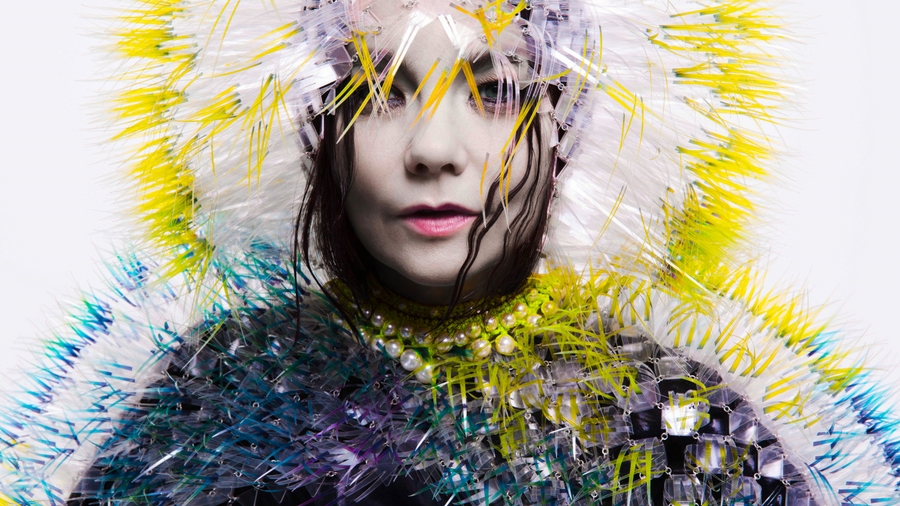I've just had my VR epiphany, and I've got Björk to thank for it
Human Beha-VR

I couldn't care less about virtual reality.
It's been hyped up all of my adult life, and has so far heralded mostly tedious novelty games, remakes and bland demos. To me, it's a classic case of the trend for 'soft' technology we've seen over the past decade, where apps, social media platforms, and now virtual reality act as stop-gaps for the true tech breakthroughs we really crave.
And then came Björk.
VR revealed
The Icelandic songstress has always been quirky and unpredictable, and Björk Digital, her immersive VR exhibition, follows a typically experimental tack. The exhibition, which is at Somerset House in London until October 23 2016 before moving to Paris and Houston, features five surprisingly different VR experiences created for songs from Björk's 2015 album Vulnicura, which will feature on Vulnicura VR, the first virtual reality music album.

If you're yet to experience VR, or think – like me – that's it's hyperbolic nonsense for which there is no decent hardware yet, try this for size: a personal performance with Björk on a beach, a dance with her bizarre avatar as she grows in front of you, and … a look inside her mouth while she sings. Considering how early we are in the VR era – if, indeed, there is to be such an era at all – it's surprisingly polished stuff.
A true 3D experience
There's no question what the highlight of the show is. Visitors experience most of the exhibition through Samsung Gear VR headsets while spinning around on bar stools. However, for the Notget VR video, it's time for a stroll around a curtained-off booth while wearing a HTC Vive. This is my first true 3D experience, and it's awesome.
During the video, Björk becomes a digital moth giantess. As you move around, behind, in front of and occasionally right into the middle of Björk – restrained only by the irritating cables – she grows until, by the end, she's virtually flattened you. Sound comes via Bowers & Wilkins headphones – used throughout Björk Digital – with the stereo effect switching as you turn around. Okay, so that's limited, but for now it does the trick.
Sign up for breaking news, reviews, opinion, top tech deals, and more.

In another room is Mouth Mantra VR, where a Samsung Gear VR transports the wearer to no less a place than Björk's mouth. It's kooky, it's contorted, and it's incredibly claustrophobic. Ditto Quicksand VR (actually the only video on show that's not available online to those with their own VR gear), where Björk's 'Rottlace' mask – created using 3D printers by Professor Neri Oxman, don't you know – gives off visual fireworks and streaming sparks. However, it does lack any compelling reason to look behind you, making the 360-degree canvas slightly pointless.
Wraparound video
Despite the fact that VR grabs the headlines at Björk Digital, in the build-up to Mouth Mantra VR and Notget VR the exhibition delves into a few related technologies, notably 360 video and spatial surround sound. The first – a seven-minute virtual 360 video for the orchestral-electronic tune Stonemilker, also from Vulnicura – is a delightful use of the tech.

I've always dismissed 360 video as completely different from VR, but director Andrew Huang uses it incredibly simply yet creatively, fading Björk in and out of an Icelandic beach so that she becomes elusive. It's not just a case of 'also see what's behind the camera' – as most 360 video is – but a whole new way of watching a music video; sometimes there are three Björks, other times you turn around and Björk is singing in your face. Other times it's just the ocean.
“I feel the chronological narrative of the album is ideal for the private circus virtual reality is,” says Björk, describing the exhibition as “a theatre able to capture the emotional landscape". Stonemilker VR is also on YouTube 360, and available as an app to download for various 360 headsets.
3D soundscapes
There's no doubt that VR can be immersive – despite the rather narrow field of view and lack of sharpness on the Samsung Gear VR – but if Björk Digital demonstrates anything it's that for truly immersive VR, the sound is going to be just as important as the video.
In the Black Lake room, two huge stretched projection screens face each other, with a slightly different video playing on each for the haunting 10-minute song. However, what's really worth moving around the room for is the surround sound. No less than 49 Bowers & Wilkins speakers are used, mostly at head height, though Björk's vocal comes from above.

It made me realise that those who are after true immersion are going to have to seriously upgrade their home cinemas for what's here called 'wave field synthesis' in years to come. Or, more likely, spatial surround sound headphones are going to become big business. Either way, cinema still has a lot of legs. Forty-nine, to be precise.
Blowing hot and cold
However impressed I was with all this, it's clear that the VR hardware itself does limit other attempts at true immersion. During the final VR experience, someone must have opened a door because a waft of cold air hit me while I was walking around a projection of Björk. It struck me that such sensations could add an intriguing layer to VR (thought perhaps a cold Icelandic gale would be too much) if only it wasn't for the hardware itself, which completely covers the wearer's face and head with foam and strapping; one thing you really notice as you finish a 10-minute stint of VR is how hot your face is.

VR epiphany
Am I sold on VR? Almost completely, but there's clearly work to do on the hardware. Björk and her collaborators have used the various formats to stunning effect, particularly on the 'pure' VR of Notget VR and the simple yet entrancing 360 video of Stonemilker VR. It also underscores how good the HTC Vive is compared to the often blurry, pixellated images on the Samsung Gear VR.
However, being able to look at both video and VR images in 360 degrees also makes you quickly realise how restrictive the field of view is; there's no peripheral vision, which does prevent true immersion. It's also strange to enter a room full of headsets and stools, and even stranger to 'wake up' in one after the image fades and the headphones go silent. Compelling VR is also going to need to become wireless – and quickly.
After 10 years of component miniaturisation, a jump in computing power and social adaption to using the hardware, VR can be the future of music, and probably the future of 'live' music, sport and all kinds of other things, too. I had my VR epiphany at Björk Digital, but I also realised that for the next decade or so it's the enveloping brilliance of spatial surround sound, and especially the quasi-VR of 360 video, that will likely dominate the mainstream while the tech industry tries to create usable – and much smaller – VR hardware.

Jamie is a freelance tech, travel and space journalist based in the UK. He’s been writing regularly for Techradar since it was launched in 2008 and also writes regularly for Forbes, The Telegraph, the South China Morning Post, Sky & Telescope and the Sky At Night magazine as well as other Future titles T3, Digital Camera World, All About Space and Space.com. He also edits two of his own websites, TravGear.com and WhenIsTheNextEclipse.com that reflect his obsession with travel gear and solar eclipse travel. He is the author of A Stargazing Program For Beginners (Springer, 2015),